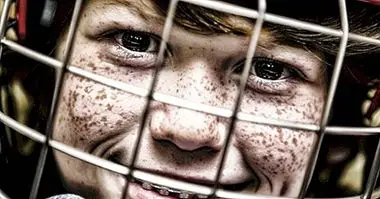The face of the leader: the chiefs share certain facial features
There are many criticisms of systems based on a Leader Y rigid hierarchies . Peter's principle, for example, is based on the idea that employees ascend until reaching its point of maximum incompetence. That is why in many organizations it is evident that the most important positions are occupied by people who do not know very well what they do, that is, by leaders who have taken their capacities to an unacceptable limit. However, what we all expect from an organization with people who rule and people who follow orders, is that the former, regardless of their level of relative competence, have at least reached their position by own merits .
To what extent is the work of selecting personnel in this regard doing well? Well, according to a research in psychology, it seems that hierarchical companies and organizations are a involuntary opportunists . People who, without knowing it, benefit from having certain facial features.
Leaders who are for the face
The study, which was published in the journalThe Leadreship Quarterly, shows that a series of people chosen at random is able to know what the leaders are doing just by looking at black and white photographs of their faces. This would mean that the people who appear in the images could have reached their positions of responsibility, in part, thanks to a certain unconscious predisposition to choose leaders with certain facial features.
These researchers conclude that the people in charge of selecting the high responsibility profiles they could be relying on criteria as irrational as the evaluation of the face when selecting a candidacy. But not only that: each position requires a special kind of leadership, and also the facial features chosen in the leaders vary according to the position they choose.
Fortune telling
The researchers have relied on a series of experiments to arrive at this conclusion. The first thing they did was to confirm that there are studies in which facial appearance is related and the chances of reaching leadership positions. However, they focused on the biases that presumably exist when assigning specific leadership positions to people only by evaluating their faces.
To do this, they selected 614 volunteer people living in Britain and were shown individually a series of black and white photographs that showed the face of certain American leaders, not known on the other side of the Atlantic. This group of leaders was composed of CEOs of large companies, generals of the Navy, governors elected between 1996 and 2006 and sports coaches. Each participant was assigned a category (for example, "generals of the army"), and from that moment on he should say which of the two faces that were shown corresponded to that type of leader . Then, each of them expressed their degree of security in their "divinatory" abilities, scoring on a scale from 0 to 100.
The truth is that, despite tending towards pessimism when it comes to assessing their degree of certainty in decisions, volunteers showed up unusually skilled when it comes to relating leaders to their real profession. The only type of leader who resisted them was the politicians, since in these cases they did not hit more than expected by chance (that is, 50% of the time).
Leadership, traits and stereotypes
In a second experiment conducted by the same team of researchers, 929 British participants evaluated 80 of the faces of senior officials in 15 different aspects: extraversion, masculinity, charisma, etc. This time, however, the volunteers did not know they were seeing leaders' faces. They were not given any additional information about the people who appeared in the photographs.
As a result of this exercise, the researchers found that certain leaders tended to score high on some dimensions that are related to stereotypes own of its professional area. For example, military faces scored high in masculinity and low in warmth, while CEOs scored high on "proficiency level". It should be remembered that these scores were given by people who had no idea who they were evaluating.
The problem
This line of research is another example of many organizations they are not being as rational as you would expect at the time of selecting its leaders, people with a high responsibility for the collective success of the company.Important personnel selectors could be getting carried away by subjective assessments of how the appearance of senior officials should look, strictly following the canons dictated by the stereotype.
Of course, evaluating someone's face may be easier than measuring aspects as abstract as the leadership , the social skills waves negotiation skills ; among other things, because judging someone for their aesthetics is an automatic process. However, it is still true that organizations based on the complexity of teamwork also deserve a selection of equally complex and rational personnel.
The human Resources they are again in the spotlight (or, at least, in that of the Americans).



















